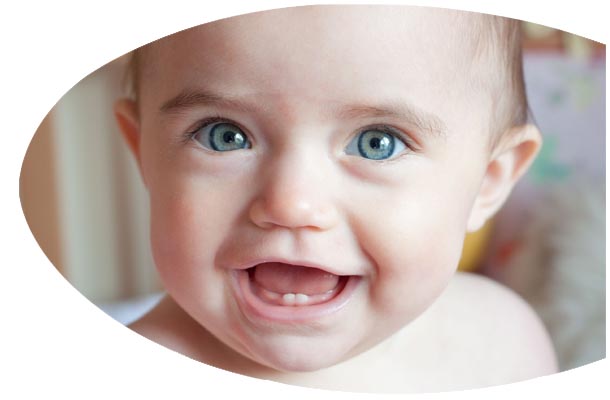Dental Care in Infants
6 October 2017 | Admin



As a parent, it is imperative that you look after the oral health of your children.
We suggest that you should start cleaning your child’s mouth even prior to the arrival of teeth.
You can do this after feeding by wiping the gums with a warm, wet wash cloth or a thimble like brush (which fits over your index finger) to brush off the excess foods from the gums. This will get the child used to brushing prior to the arrival of teeth. Baby teeth begin to appear 3 to 9 months after birth, and most children will have a full set by the age of three.

Once the teeth begin to arrive in the mouth it is crucial that you start to take care of them right away. Many parents are under the impression that baby teeth are not important as they will eventually be replaced by adult teeth.
Baby teeth prepare the area for the permanent dentition and if not cared for properly, your child could get an infection that may lead to the eventual
tooth loss. This can affect the spacing of the adult teeth and create the need for braces or other dental treatment in the future. The first sign of dental
cavities in baby teeth is discolouration and minor pitting.
Baby bottle tooth decay can be triggered by;
- Milk
- Formula
- Fruit Juices
One of the main causes for dental cavities in children is putting a baby to bed with a bottle of milk (or worse, juice). Please refrain from leaving an infant with a bottle for long periods of time as these sugary liquids pool around the gums and teeth while your baby sleeps.
Once the infant’s teeth have grown, it is time to start brushing. Use a small amount (about the size of a grain of rice) of fluoride toothpaste and brush your child’s teeth twice a day for two minutes. Follow our detailed explanation of how to brush with BioMin™ F toothpaste here.
Parents are recommended to book a dental examination with their dentist at the age of 1 or when their first tooth has appeared (whichever comes first).